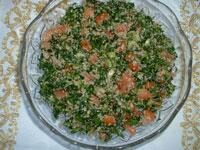Cyberspace Opens a New Frontier for the Future of Arabic
Arabic is celebrated every year not only as a language spoken by 350 million people, but also as an incubator of cherished religious and cultural traditions. On the occasion last week of Arabic Language Day, initiated by the UN General Assembly in 1971, the discussion about the future of the language continues to be defined by serious concerns in the context of globalisation.
The media commentary consistently warns that national identity in Arab countries is threatened as Arabic is used less and less in everyday settings and professional life. These concerns are legitimate, but they should not obscure another potential field in the development and preservation of the Arabic language: cyberspace. The growth in online Arabic content, especially user-generated content, gives us ample opportunities to stimulate our language development and sustain our sense of national identity.
Throughout history, Arabic has formed a cohesive bond for communities in the region, while it has also served as a repository for national identity values and traditions. The notion of language as a complex encapsulation of national identity has always inspired intellectual analyses about culture and communication.
The issue is covered comprehensively in The Arabic Language and National Identity: A Study in Ideology, by the Cambridge University professor Yasir Suleiman. The book explores the symbiotic link between language and identity in the region.
Last year, I met Prof Suleiman at a Cambridge conference on Middle East broadcasting and it was quite clear that he saw huge potential for Arabic to be further developed in cyberspace and the media sphere. Prof Suleiman spoke on inspirational themes including the potential role for communication media in virtual reality to expand the use of Arabic and encourage a greater articulation of our national identity.
A review of online Arabic content suggests that the region has a long way to go before it will make its mark on the global communications map. According to the 2010 Arab Media Outlook report, jointly released by Dubai Press Club and PricewaterhouseCoopers, the proliferation of internet services in the region is bound to boost Arabic user-generated content.
The current situation seems a bit discouraging with Arabic content on the internet accounting for less than 2 per cent of the total. Obviously, by encouraging more Arabic content in virtual space, we are more likely to enable more Arabic communication which will reverberate in everyday life.
Recently, it has been heartening to see countries like the UAE, Saudi Arabia and Egypt introduce Arabic domain names to allow Arabic-speaking users to access Web content. It is also encouraging to see internet content services like Maktoob.com, recently acquired by Yahoo.com, operating in Arabic.
Last year, Facebook launched its Arab services to allow millions of users in the region to interact in their native language. In observing the UN-declared International Mother Language Day on February 21, there was a campaign among the region’s Facebook users to communicate exclusively in Arabic.
Of course, giants like Google are to be commended for offering Arab services in searches, blogging, and translation, but more needs to be done by software and internet development firms to diffuse Arabic content across the Web. IT professionals should also shoulder responsibility for developing Arabic software and hardware compatibilities. In my own experience, I have had some difficulties creating Arabic content because I need to use third-party programs to enable Arabic integration.
While new media offer us opportunities for generating more Arabic content in cyberspace, we should not overlook potential problems. Some writers post using local dialects, which limits their appeal to Arabic speakers from other regions.
Others are inclined towards mixed Arabic and English (dubbed Arabizi in cyberspace jargon) content, which undermines the whole idea of Arabising cyberspace according to uniform standards. Worse, some writers invent their own Arabic shorthand on social network sites, something that obstructs the integration of proper Arabic into virtual life.
The preservation and development of the Arabic language is vital for a region keen on shielding national identity from the harmful forces accompanying globalisation. As online media continue to shape our public sphere, the shape that the Arabic language takes in virtual space is key to how we communicate and share our values and ideas in the real world. I understand that the challenges ahead are incredibly tough, but the opportunities in cyberspace for the development of the language are as expansive as the medium itself.
Muhammad Ayish
The National


